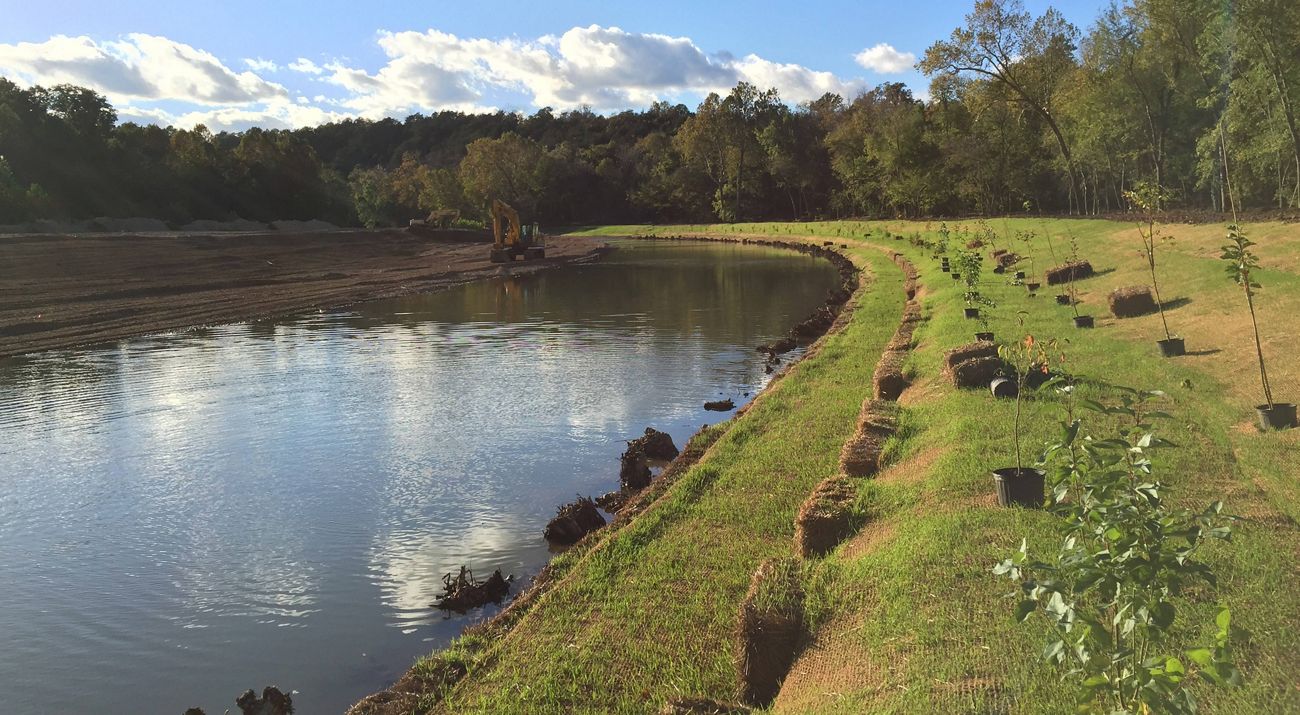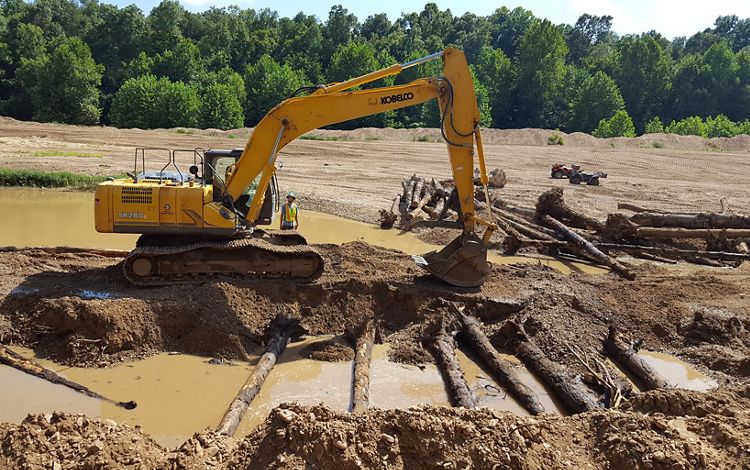
Restoring the Kings River
The Nature Conservancy in Arkansas is working to restore the Oxbow stretch of the King's River.
Whether you live on the Kings River or come to visit, you know it is a beautiful place to fish, float, or just find peace in nature. Downstream communities count on it to bring clean water to Table Rock Lake.
The Kings is not without water quality problems, and The Nature Conservancy is working hand in hand with partners to improve its health.
The Challenge: Reduce Erosion
Sediment—soil loss from eroding streambanks and runoff from unpaved roads—is the number one threat to water quality in the Kings River. Some sediment is normal in a healthy river, but when there’s too much, it causes the river to become unstable, shift course, and erode its banks even more. Landowners lose valuable property, fish are smothered, and the river can turn a muddy brown after a rain.
Streambank Restoration For Cleaner Water
To help manage this problem, the Conservancy completed two streambank restorations on the Kings River. The first is at Mason Bend, a scenic halfway point between Rockhouse Access and Kings River Outfitters with a gravel bar and swimming hole. The second is at the Oxbow, about two miles downstream of Rockhouse Access.
The Oxbow Project
In fall 2016, the Conservancy began restoration of The Oxbow. The project occurred on a ¾-mile stretch of the Kings that runs through the Conservancy’s Kings River Preserve, one of the most heavily used sections of the river by canoeists and anglers.
The Oxbow site had been unstable for nearly 70 years, losing on average 10 feet of bank per year to erosion. In 2016 alone, it dumped 30,000 tons (65 feet of bank) of sediment into the river. During a recent Kings River assessment, the Oxbow ranked as the second highest priority streambank in need of restoration on over 60 miles of river.
Normally, we start restoration projects at smaller sites in the river’s headwaters to reduce the effects of upstream impacts and sources of sediment. But because the Oxbow was on the preserve and the 2nd largest sediment-producing bank on the river—and important for a positive recreational experience—we decided to tackle it.
We used natural channel design techniques for the project, which is an engineering technique that uses stable, natural conditions as a reference for design. A toe-wood structure was used on the newly constructed bank, which provides stability, protection, and high-quaility habitat (see next page for diagram). Over 500 trees have been planted along the riparian corridor to secure the bank and prevent erosion.
On all restoration projects, maintenance is expected in the short term (5 years) while vegetation is becoming established. This is especially true when working on large river restoration sites that receive significant sediment from upstream erosion. After several large floods in the spring of 2017, a few months after construction, the site sustained some damage. As a result, in the summer of 2017, we repaired a small section of bank and installed two rock structures in the channel to better relieve pressure on the bank, giving plants more time to root. Plans are to modify the rock structure at the top of the site in 2018 to improve boating at low flows, and to make other minor changes to improve channel stability.
The restoration prevents 9,000 tons of sediment, 1,900 pounds of phosphorus, and 4,100 excess pounds of nitrogen (two nutrients commonly found in fertilizer and animal waste that are harmful to rivers in high amounts) from entering the Kings River annually.
That’s good news for anyone who values clean water, healthy wildlife, and keeping the Natural State at its best for future generations.
Volunteers Make Time to Help the Kings River


Employees of Walmart, FedEx, Pratt and Whitney, Cargill, Tyson Foods and Mahco took time out of their days to plant thousands of trees along the Kings River. Thank you to all the businesses that make community service a priority. And to all the volunteers: Thank you for getting your hands dirty to help the Kings River. You are heroes!
To learn more about the Conservancy’s Corporate Council for Conservation and how your business can join the fun, contact John Chapman, Watershed Restoration Program Director, at (479) 973-9110 or john.chapman@tnc.org or Jennifer Barnhouse, Director of Philanthropy at (501) 614-5091 j.a.barnhouse@tnc.org
